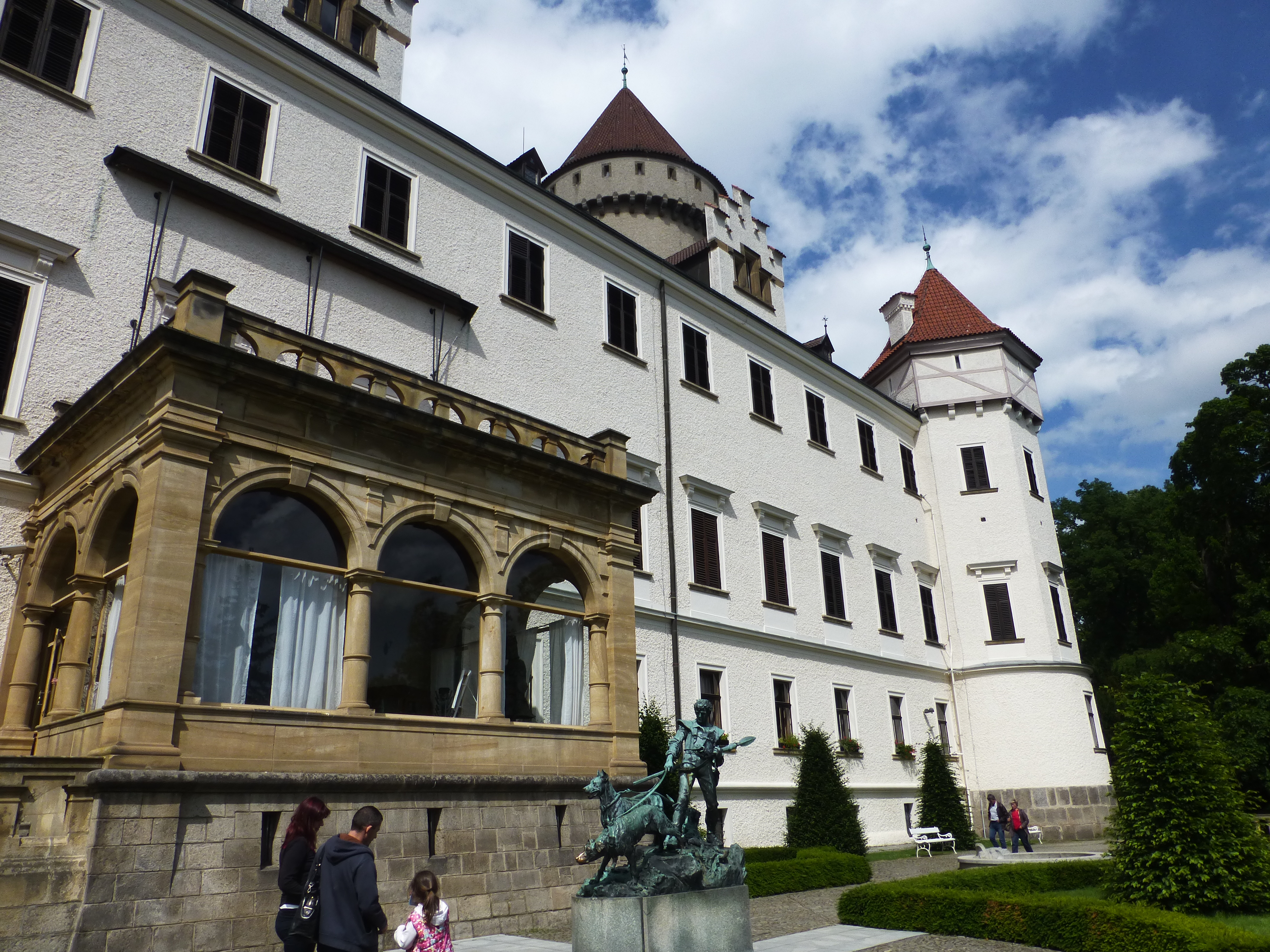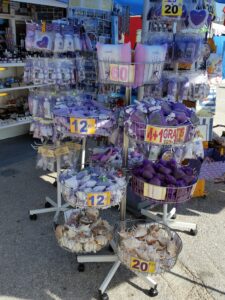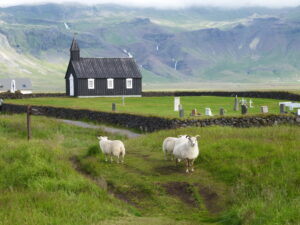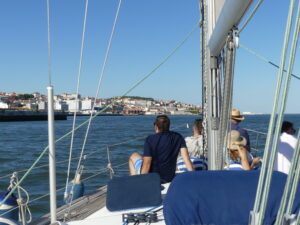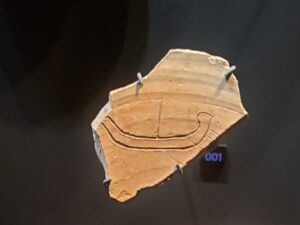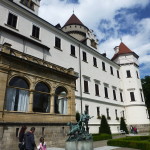
Most of us vaguely recall the story. Some duke gets killed in Eastern Europe and all hell breaks loose in World War 1.
That story gets a new depth with a visit to Zakem Konopiste near Prague. a castle re-built on the foundations of a more ancient one. All across the Czech Republic, you can tour dozens of similar chateaus, many splendidly restored. Yet Konopiste remains special because its owner was the archduke who was assassinated in Sarajevo on 28 June 1914. He was Franz Ferdinand, then heir to the rulership of the huge, wealthy Austro-Hungarian empire of the Habsburg dynasty.
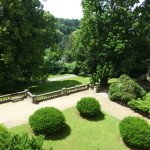
The castle itself sprawls over three levels and extended passageways connecting rooms for myriad public or private uses. Around it 225 hectares spread out in an open public park near the town of Benesov. Peacocks roam the formal garden area and birds sing throughout, but when privately held the park was where the Archduke used to hunt.
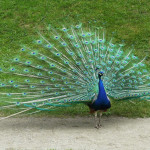
The castle still shows traces of its Renaissance origins, a once hidden wall here, a round tower there. But the most interesting sections show where the archduke and his three children lived. These rooms have now been restored to the way they looked in the year he died. They’re treated somewhat reverently – no photos please.
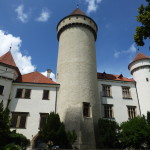
The private rooms are hardly modest in size, running in a line from the couple’s bedroom thru each’s getaway space, then on thru the children’s rooms until the two small chambers for their governess and tutor. A parallel hallway to leave the chambers was accessible on either end but the arrangement certainly encouraged flow back and forth within the family. The individual rooms are spacious, but the overall feeling is one of coziness, comfort and familial enjoyment rather than grandeur. The design and furnishings befit the inclination to austerity of a military man at heart.
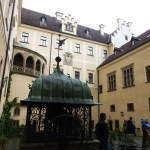
But the wealth also shows, with paintings, sculpture, furniture, ceramics and even huge Renaissance era room heaters, all drawn from the centuries old collections that Franz Ferdinand inherited from his forebears.
Otherwise you feel tossed back into the slightly overstuffed comfiness of the fin-de-siecle. Though clearly he stood astride the old and the new world, Franz Ferdinand was a man who embraced modernity. He may have used those antique Renaissance heaters, but he incorporated the latest technologies into his castle: electricity, running water, flush toilets.
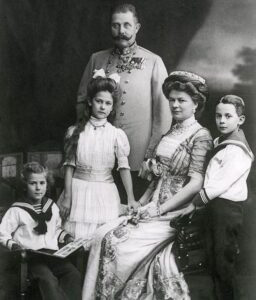
He had more modern views on marriage as well. He even renounced the pathway to the Hapsburg throne for his children by marrying a relative commoner, not one with royal blood, however that was defined. In choosing this so-called morganatic marriage, he was encouraged by his stepmother Marie Therese and supported by both the Pope and the Russian Tsar. But that choice made even chillier the already frosty relationship he had with Emperor Franz Joseph.
The emperor himself was content with a loveless marriage of imperial convenience, a story you can learn about while touring the Hapsburg palaces in Vienna. He married his royal-blooded wife, Elizabeth or informally Sisi, when she was just 16. Then her life played out a lot like Princess Diana’s in England. A beautiful woman, she fled the court when she could and enjoyed the high-life of Europe, building a similarly adoring cult about herself. She died in 1889 at 61, stabbed by another assassin while visiting Geneva.
As for Franz Ferdinand’s beloved Sophie, a charming woman according to her pictures and mother of their three children, she died by his side in 1914 also shot by his assassin. The restored white dress she wore that June day is on display in the castle, as are her bloody corset, the bullet that killed him and plaster cast death masks of them both. Oddly, the assassination almost didn’t happen. The gunman had fearfully abandoned his deadly mission already, when sometime later the Archduke’s entourage took a wrong turn and became stalled just in front of the café where the assassin sat drinking. Impulsively, he pulled out his pistol, attacked the car and shot the couple.
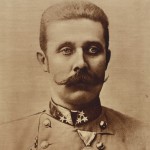
Other features of the house show that Franz Ferdinand was a traditional aristocrat in many ways. He had several obsessions. First, hunting – somewhat ironically considering the manner of his death. Throughout the castle, especially in the long halls at the lower levels, the walls are covered with thousands of mounted antlers and heads of the animals he killed – at home and abroad. In his study, a huge condor chandelier soars threateningly over the room for ever. His inventory of kills numbered some 300,000.
A second obsession centered on the heroic figures of the Hapsburg dynasty. The hallway parallel to the family rooms is decked with about a hundred portraits of his predecessors, as well as notable aesthetic heroes like Michelangelo and Dante.
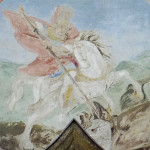
Another obsession on display at Konopiste reflects both his fondness for the military and his reportedly devout religious bent. He collected over 3500 artworks depicting St George, mostly in his legendary act of slaying a dragon. George was the favored saint of Christian Orthodox faiths (as well as the patron saint of England) and the one honored at the older church within Prague Castle. George was considered a type of Christ and emblematic of the relentless struggle of individuals, slaying the dragon of sin.
Touring these collections and the rest of the castle lets you settle into the shoes of this somewhat odd man. By the finish, you’ve become familiar with his story of marital happiness, inherited wealth and aristocratic privilege – then, ultimately, even saddened by the loss of it all with that shot heard round the world.
The two deaths soon ignited World War 1, as the Austro-Hungarian empire declared war on Serbia and other countries allied to them joined in. Soon, the 400-year rule of the Habsburgs and the golden era whose vestiges are still visible here and in Vienna, all crumbled into pieces.
The conflict also wrenched the world into modernity, disrupting millions of lives, dozens of countries, modern psychology and the arts. It continued its bloody impact through World War 2 and the dictators of the Cold War. (For more about the hellish period started by the war, see Paul Fussell’s “The Great War and Modern Memory.” Barbara Tuchman deftly explains the madness behind the Great War in “The Guns of August.”)
Things crumbled for Franz Ferdinand’s three young children as well. They initially continued to grow up in privilege under the care of their guardians, but at the end of WW1 the newly formed Czech government confiscated much of their holdings. The archduke’s two sons resisted the rise of Hitler in the 30s and ended up in camps as soon as Czech areas were annexed by Germany The experience ruined their health and led to their early deaths after the war. Daughter Sophie, a talented artist per the drawings displayed in the children’s rooms, married well, but two of her four children died during the Second World War.
At Konopiste, you can glimpse the mustachioed man who unwillingly began it all.
(Also, for more pictures from Czech Republic, CLICK HERE to view the slideshow at the end of the Czech Republic itinerary page.)


